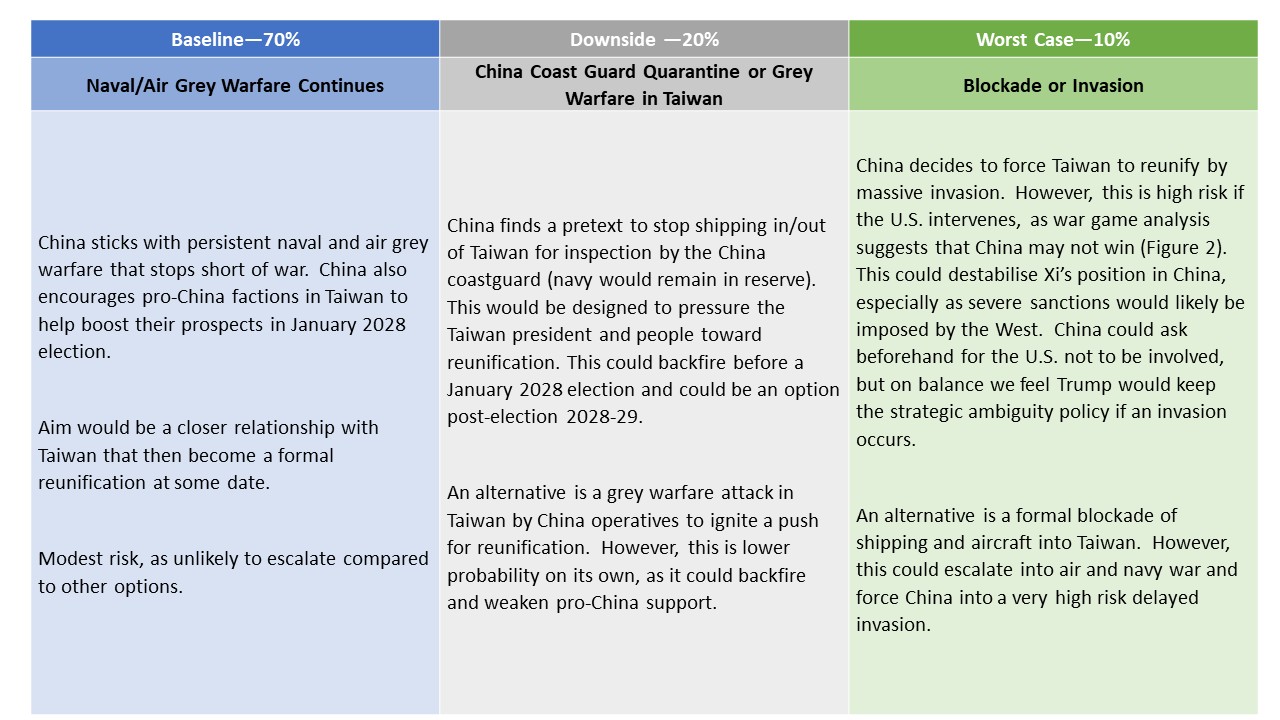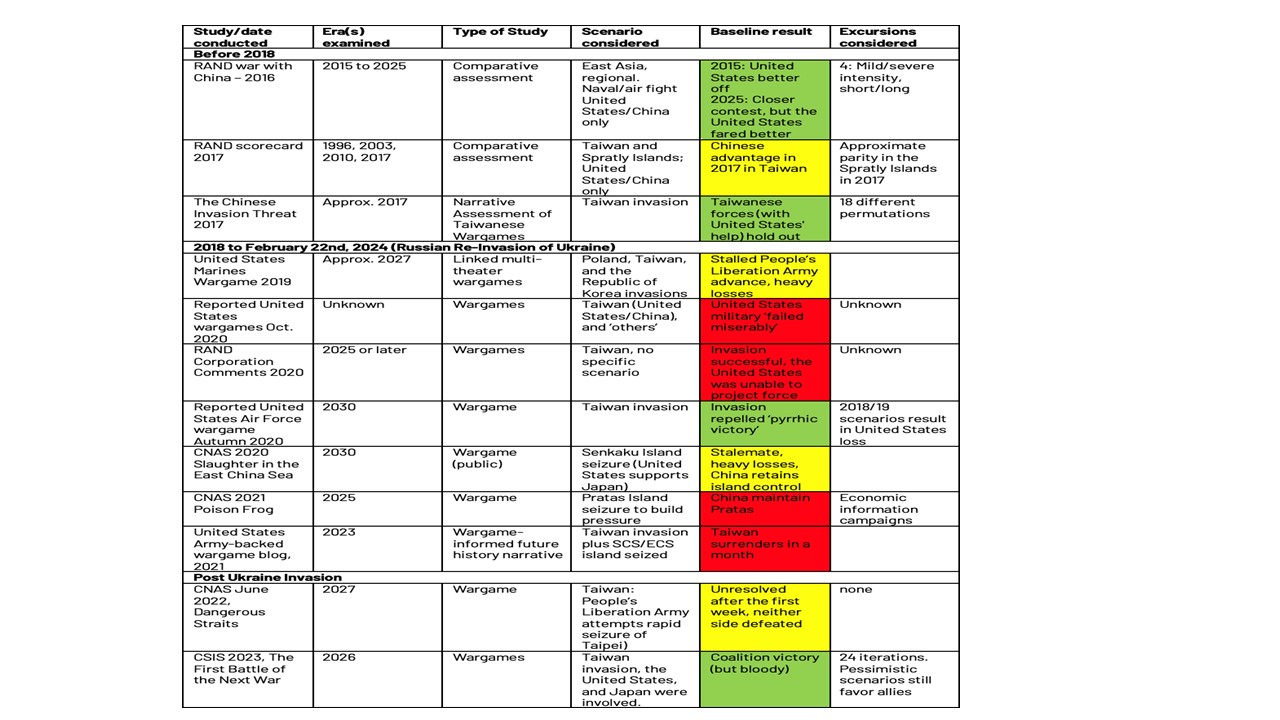Taiwan: Grey Warfare or Naval Quarantine?
· The most likely option for China is to continue the air and naval grey warfare around Taiwan, combined with support for pro-China factions in Taiwan parliament to build pressure for reunification at some stage. With invasion being too high risk for President Xi (with the U.S. maintaining the strategic ambiguity policy), an alternative option in 2027 is a China coastguard quarantine and inspection of shipping to/from Taiwan. This would be designed to increase pressure before the crucial January 2028 Taiwan presidential and parliamentary elections.
Figure 1: Taiwan Scenario 2027
Source: Continuum Economics
Debate about China’s medium-term reunification options has switched from invasion risks towards a naval quarantine for a number of reasons. Firstly, China’s military exercises have started to include naval blockades and quarantines which include the China coastguard. China’s coastguard is separate from the PLA Navy, but has a lot of large ships and has been at the forefront of China grey warfare in the South China sea (here). Secondly, the Trump administration has shown no signs of changing the strategic ambiguity policy towards an invasion of Taiwan, despite the slowness of reaching a trade deal with Taiwan. For President Xi, this makes an invasion or blockade (Figure 1) too high risk, as war game analysis suggests that China may not win if the U.S. become militarily involved (Figure 2). Defeat would be destabilizing for Xi and the Communist Party, and Xi is not a gambler. Xi could ask Trump for an understanding that reunification will eventually happen and that other countries should not be involved. Xi could fold this into a U.S./China trade deal (here). They are expected to meet at the APEC meeting in S Korea on October 31. However, the Trump administration are likely to counter that reunification should not occur via military invasion, which could leave China sticking with air/naval grey warfare or considering the option of ship quarantine (Figure 1). It is unclear how the U.S. would respond militarily to a quarantine. The 3rd reason that speculation has shifted away from an invasion is that parliamentary opposition to the DPP president has curtailed military buildout. Additionally, though opinion polls in Taiwan show voters oppose invasion, they do signal a majority of voters expect reunification at some stage. This gives China the opportunity to encourage pro-China and reunification factions within Taiwan.
January 2028 is a pivotal date with parliamentary and presidential elections. China could either pressure for a pro-China result beforehand, given the deadlock between the president and parliament. This partially worked in 2024, though not the 2020 election. The idea is that a quarantine could be imposed by China’s coastguard to add pressure, which could later be deescalated to avoid escalation of war, and potentially reimposed at a later date. It may not lead to U.S. military involvement, given Trump’s reluctance to be drawn into war. China used this option in 1954-55 and 1958 for some Taiwan islands, though the U.S. navy at the time broke the quarantine.
An alternative idea is that a quarantine could be imposed after the January 2028 elections if it does not go China’s way and could serve as a precursor towards grey warfare in Taiwan (e.g. China inciting popular revolt against the election result).
Given the current Trump administration stance, we have reduced the probability of an invasion in 2027 down to 10% from 20% (Figure 1), but have the China coastguard quarantine option at 20%. The probabilities are likely lower in 2026, as the January 2028 Taiwan election is more distant and Xi could try to convince Trump several times to weaken the strategic ambiguity policy. However, our baseline for 2026 and 2027 remains that China maintains the existing air and naval grey warfare, which is low risk for China but accompanies support for pro-China factions in Taiwan. If Trump and Xi meet at the APEC meeting, it is worth closely understanding where China and the U.S. posture on the Taiwan question.
Figure 2: Taiwan War Game Scenarios
Source: CIMSEC (here)

